For simplicity, let us consider the two-dimensional case first. The linearity of a two-dimensional integral operator allows us to decompose this operator into two terms. The first term corresponds to the steep part of the travel-time function, satisfying the time-sampling criterion (10). The second term corresponds to the flat part of the traveltime, which satisfies the midpoint-sampling criterion (6). The first part is not aliased with respect to the time sampling interval, while the second one is not aliased with respect to the space sampling. We apply a simple linear interpolation in time to construct the flat part. Reciprocally, linear interpolation in space is applied to construct the steep part of the operator in the fashion of Hale's time-shifting method. Linear interpolation in this case is a cheap substitution for the errorless, but computationally expensive sinc interpolation. The amplitude difference between the two integrals is simply the Jacobian term
| |
(11) |
According to the proposed modification, Hale's antialiasing principle is reformulated, as follows:
In the steep part of an integral operator, never allow successive time shifts applied to the input trace to differ by more than one time sampling interval. In the flat part of the operator, never allow successive space shifts to differ by more than one space sampling interval.
Figure 7, borrowed from Basic Earth Imaging Claerbout (1995), illustrates the basic idea of the proposed technique. It clearly shows the difference between the flat and steep parts of migration hyperbolas. To view the reciprocity, rotate the figure by 90 degrees.
|
amotra
Figure 7 Figure borrowed from BEI to illustrate the reciprocity antialiasing. The flat parts of the hyperbolas require interpolation in time. The steep parts of the hyperbolas require interpolation in space. |  |
The reader familiar with Ratfor can examine the details of the algorithm in the post-stack migration program, listed in Appendix. The program is based on the tutorial kirchfast program in BEI. The nearest neighbor interpolation is replaced by linear interpolation, and the two parts of the program stand for the steep-dip and low-dip parts of the operator. The program was not optimized for a better performance. To compare the proposed antialiasing with triangle filtering, we test the antialiased migration program on SEP's canonical 2-D synthetic tests. Figure 8 shows a simple model and the modeling results from aliased (the nearest neighbor interpolation) modeling, triangle antialiasing and the proposed reciprocity method. The modeling results were migrated with the corresponding migration operators to obtain the image of the model in Figure 9. Both the triangle filtering and the proposed method succeeded in removing the major aliasing artifacts. However, the reciprocity method demonstrates a higher resolution and a better preservation of the frequency content.
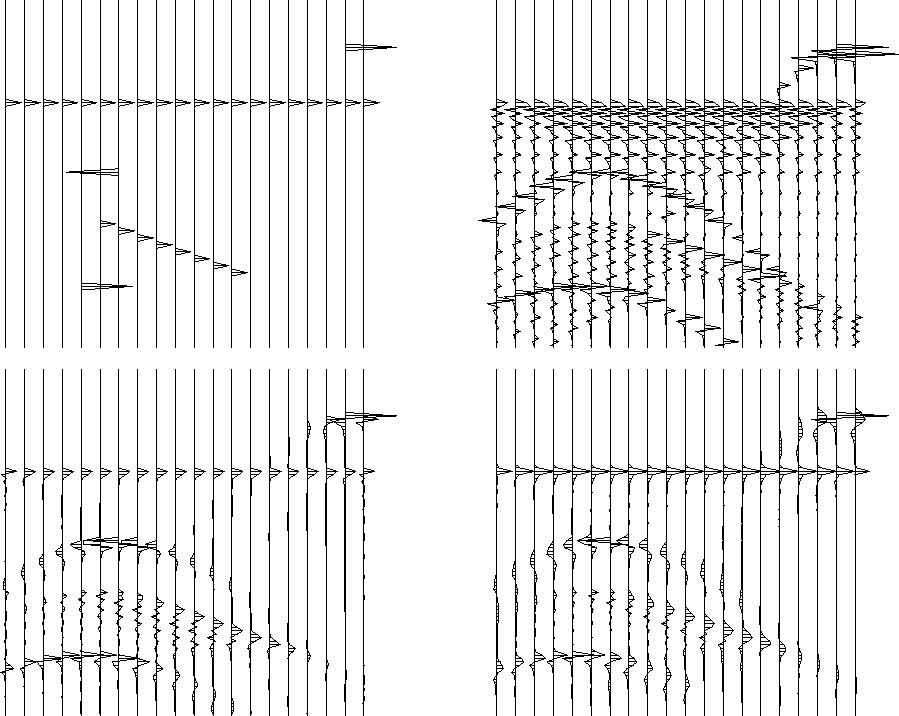 |
 |
These properties are examined more closely in the next synthetic example. Figure 10 shows a more sophisticated model that contains a fault, an uncomformity and faulting structures Claerbout (1995). For better displaying, we extract the central part of the model and compare it with the migration results of different methods in Figure 11. Comparing the plots shows that the reciprocity method successfully removes the aliasing artifacts (round-off errors) of the aliased (nearest neighbor interpolation) migration. At the same time, it is less harmful to the high-frequency components of the data than triangle filtering. This conclusion finds an additional support in Figure 12 that displays the average spectrum of the image traces for different methods. Both of the antialiasing methods remove the high-frequency artifacts of the nearest neighbor modeling and migration. The reciprocity method performs it in a gentler way, preserving the high-frequency components of the model.
|
amosmo
Figure 10 Synthetic model used to test the antialiased migration program. | 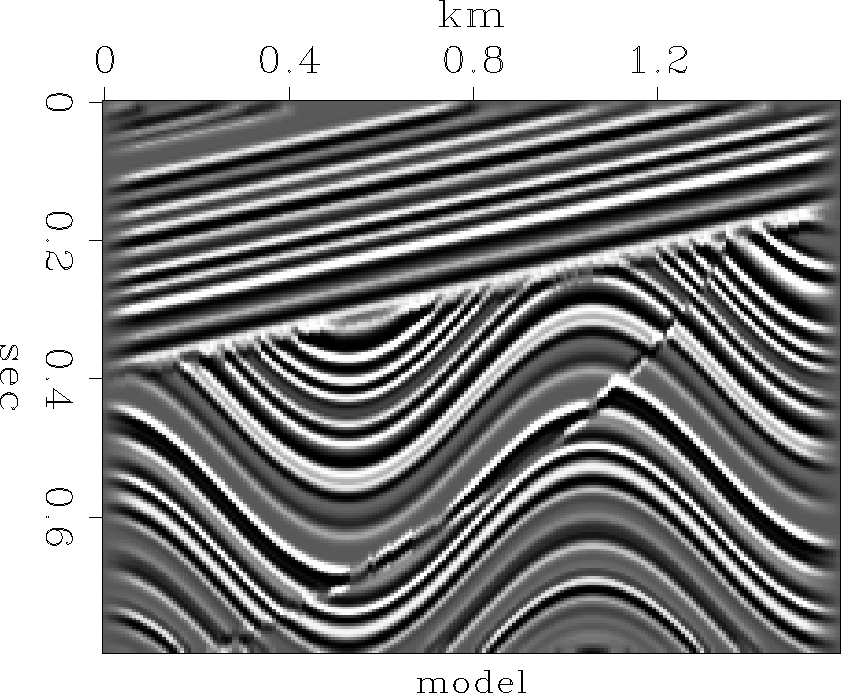 |
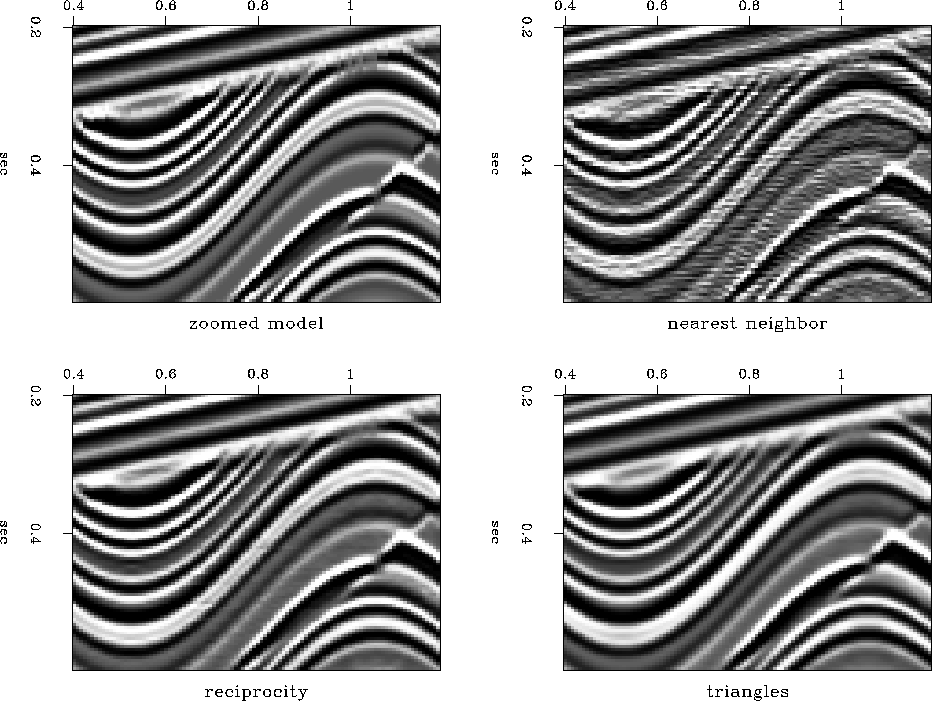 |
|
amospe
Figure 12 Top is the spectrum of the model. The other plots are the spectra of the migrated images. The second plot corresponds to the modeling/migration without account for antialiasing. The third plot is modeling/migration with the reciprocity antialiasing. The bottom plot is modeling/migration with triangle antialiasing. | 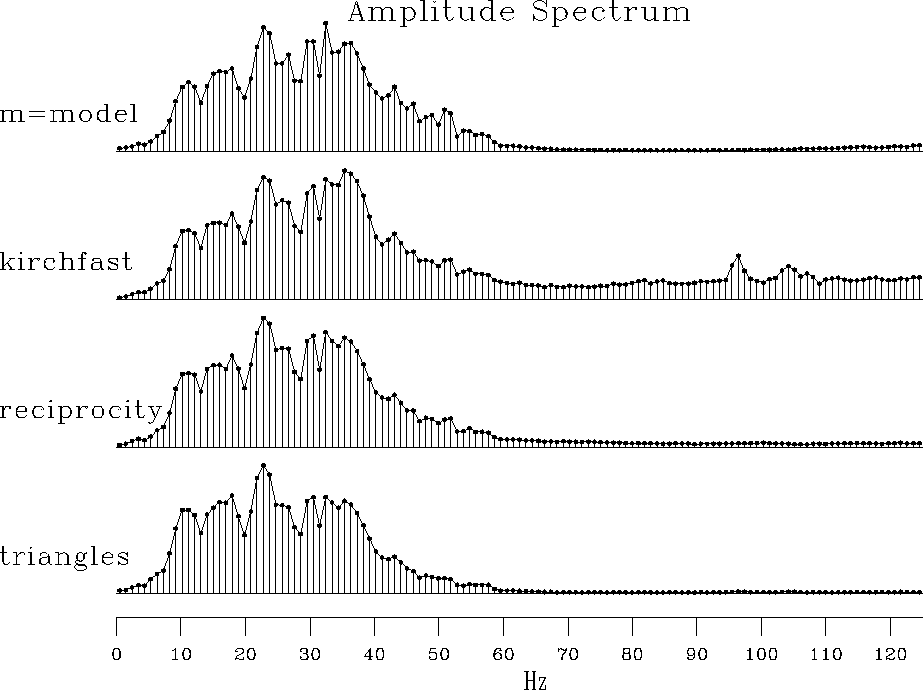 |
The algorithm sequence of the antialiased migration is illustrated in Figures 13 and 14. The two plots in Figure 13 show the steep-dip and flat-dip modeling respectively. The superposition of these two terms is the resultant antialiased data shown in the left plot of Figure 15. The right plot of Figure 15 shows the migrated image obtained by adding the flat-dip (left of Figure 14) and steep-dip (right of Figure 14) migrations.
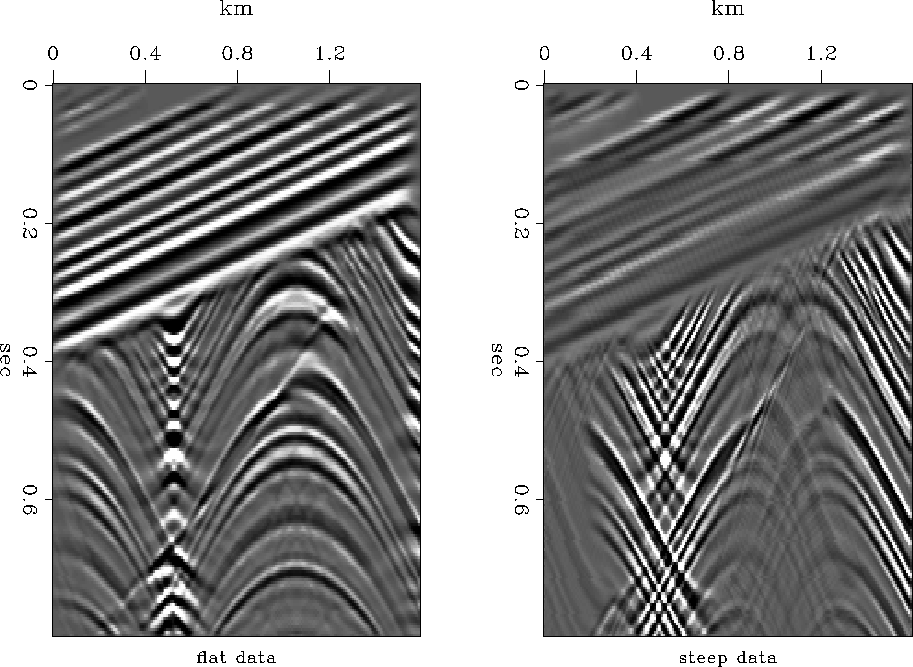 |
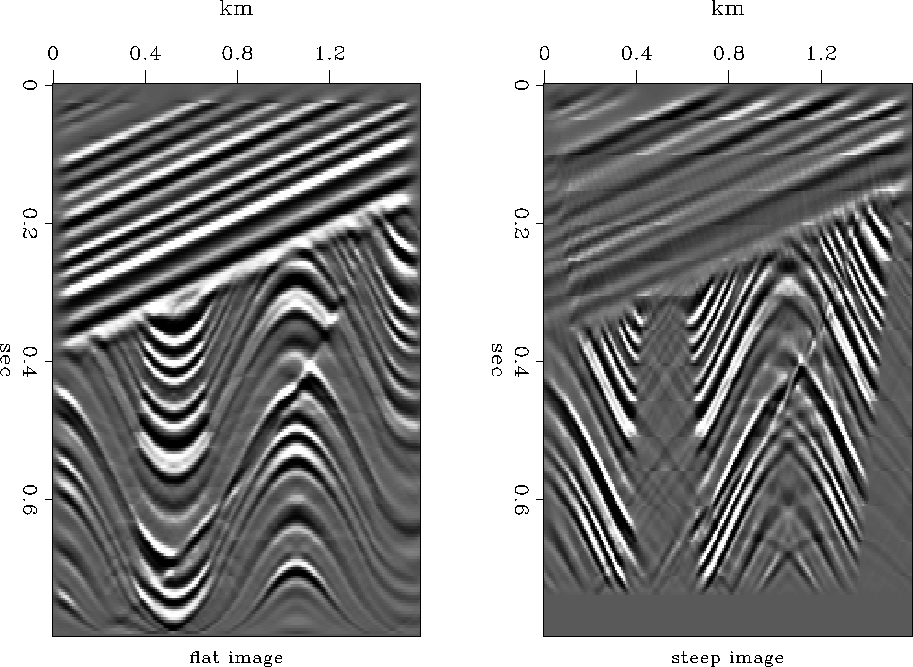 |
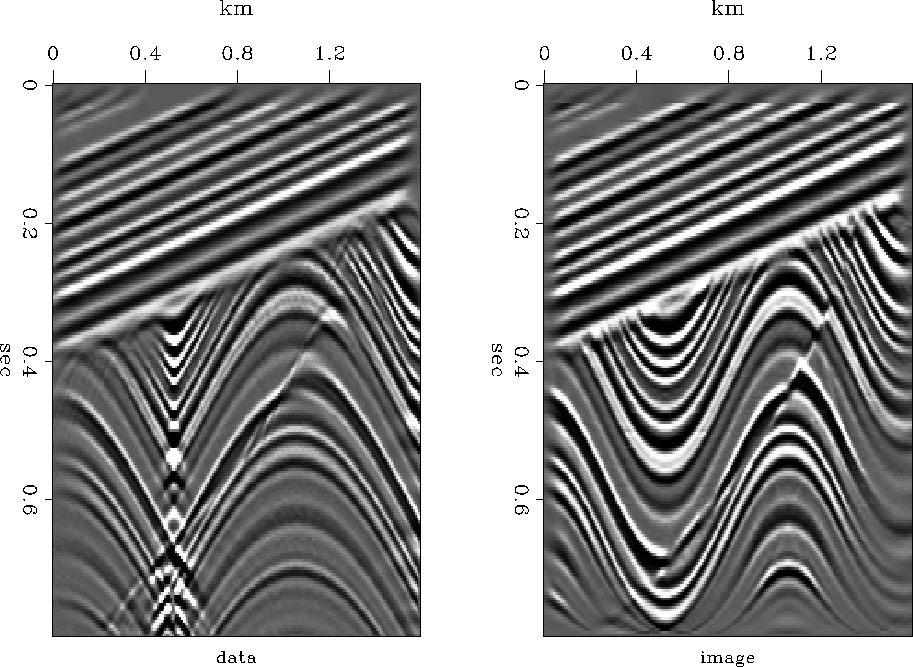 |
We have compared the performance of the antialiased migration with
that of the aliased migration and the migration with triangle
filtering. The test data set included 500 by 250 data points with
![]() sec, and
sec, and ![]() m. The CPU time of different
routines on the HP 9000-735/99 workstation is charted in Figure
16. The figure shows that the performance of the reciprocity
antialiasing increases with increase of the migration velocity. This
surprising behavior is explained by the fact that high-velocity
migration hyperbolas require a smaller number of expensive
computations in the steep (aliased) parts. It allows us to expect a
high performance of the method in application to the curvilinear
operators with limited aperture (DMO, offset continuation, AMO). In
the test employed, the overall performance of our migration program
appeared higher than that of the kaafast program
Bevc and Claerbout (1992).
m. The CPU time of different
routines on the HP 9000-735/99 workstation is charted in Figure
16. The figure shows that the performance of the reciprocity
antialiasing increases with increase of the migration velocity. This
surprising behavior is explained by the fact that high-velocity
migration hyperbolas require a smaller number of expensive
computations in the steep (aliased) parts. It allows us to expect a
high performance of the method in application to the curvilinear
operators with limited aperture (DMO, offset continuation, AMO). In
the test employed, the overall performance of our migration program
appeared higher than that of the kaafast program
Bevc and Claerbout (1992).
|
amochp
Figure 16 CPU time of migration programs on HP 9000-735 versus the constant migration velocity used in the experiment. | 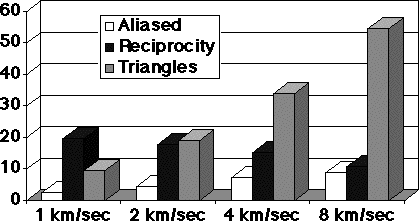 |
The proposed method of antialiasing is easily generalized to the case of a three-dimensional integral operator, such as azimuth moveout. In this case, one needs to consider three different parameterizations: t(x,y), x(t,y), and y(t,x) and switch from one of them to another according to the rule: